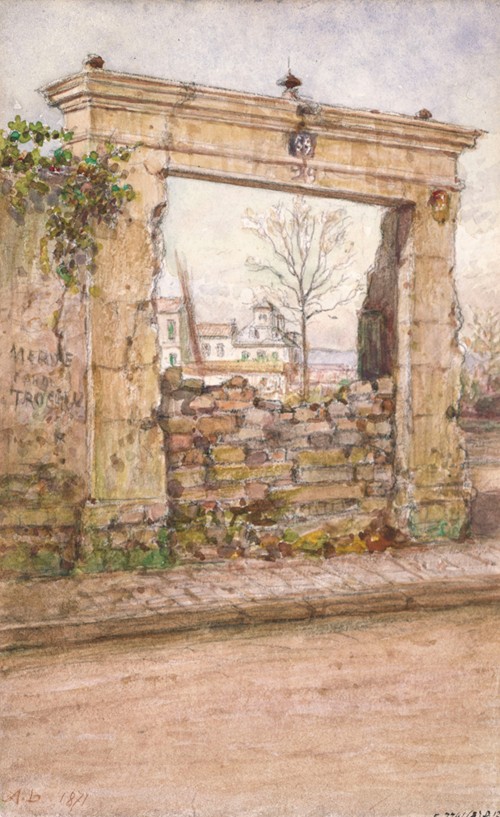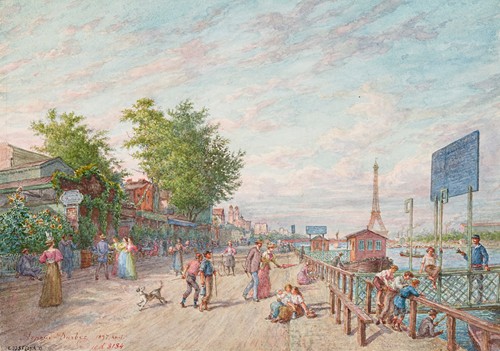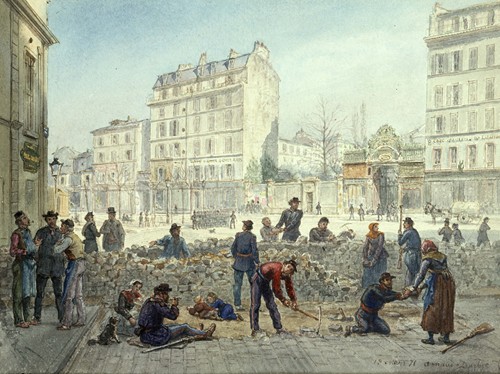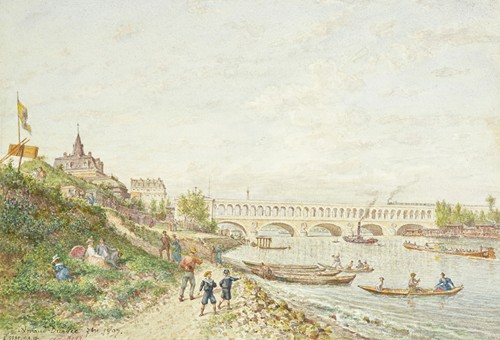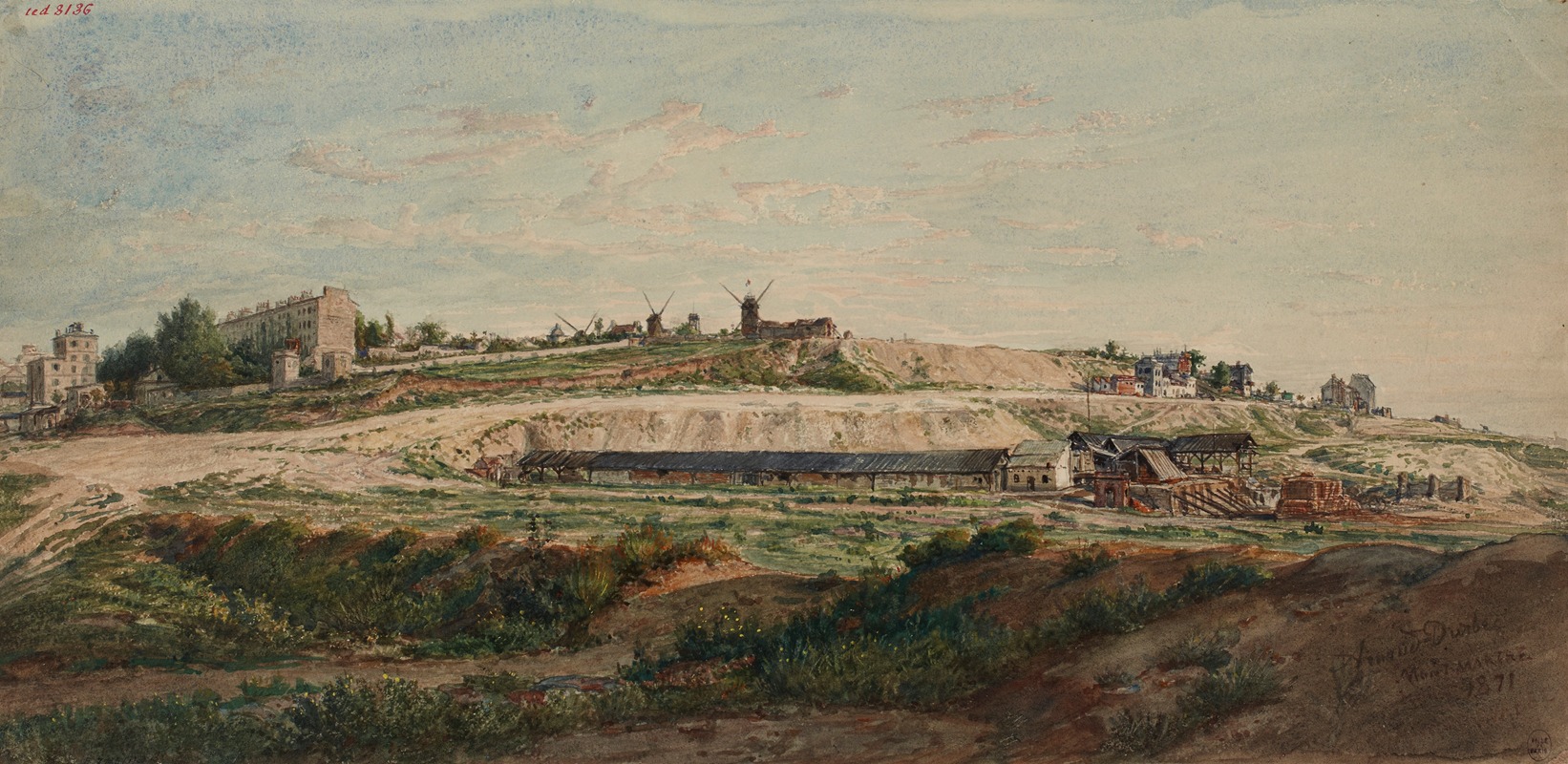
Jean Baptiste François Arnaud-Durbec, known as Arnaud-Durbec, was a French painter from the city of Marseille. Faced with the need to provide for his family, Arnaud-Durbec, the oldest of a numerous family, decides to quit his classical studies and becomes an apprentice in a academy where interior decoration was taught. The skills he learned during his apprenticeship will be highly important in his development as an artist.
He later enrolls in the École des Beaux-Arts in Marseille, first under the direction of the Augustin Aubert (1781-1857), later unter the painter Émile Loubon (1809-1863). Loubon directs him to start working on various side projects votive offerings, decorations for cafés, church paintings, portraits, lithographs. Upon spending some time in Marignane, he gets sick from malaria and is confined to bed, in a serious condition, for three months. After surviving the disease, he returns to Marseille, where he executes paintings for the Church of Estaque. He later paints and decorates parts of the Église Saint Pierre in Avignon, as well.
In 1868, he leaves for Paris, where his career truly takes off. After the Franco-Prussian War in 1870, Arnaud-Durbec meets Félix Philippoteaux (1815-1884), under whose command, together with a group of Parisian artists, he works on the Panorama du siege de Paris" (1870-71). Arnaud-Durbec was also a member the Paris Commune. He is later commissioned to do the decoration of the hunting hall in the Neudeck Castle. Further works on commission follow, as Arnaud-Durbec's reputation grows; he works in various theaters, including Montpellier, and does part of the central dome of the Exposition Universelle of 1881, as well as the hall dedicated to the establishment known as Menus-Plaisirs du Roi. Arnaud-Durbec died in Paris in 1910, ending a long and fruitful career

